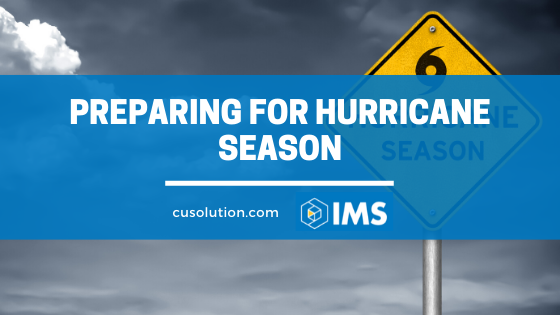The official start of the 2020 Atlantic hurricane season starts on June 1 and runs until November 30, but there’s already a tropical storm developing off the coast of Florida. That means it’s time to take another look at your disaster recovery and backup systems to make sure you’re prepared for any storms.
According to the National Oceanic and Atmospheric Administration (NOAA) National Centers for Environmental Information, the U.S. South, Central and Southeast regions experience a higher frequency of billion-dollar disaster events than any other region in the country. Severe storms like hurricanes and tornadoes lead to extensive power and telecommunications outages, mail service disruption, facility damage and transportation restrictions that impact how people access their money. Credit unions are no exception and may have to shut down or move operations for safety. In these moments it’s crucial your members can rely on you to continue serving the community.
Our client Louisiana Federal Credit Union has experienced many storms over the years, including Hurricanes Katrina, Rita, Gustav and Isaac. During the aftermath of every storm, their community has relied heavily on Louisiana FCU to provide full financial services. Knowing they are located in a hot zone for natural disasters, the credit union decided to move their core system to a safer region in the Northwest. By upgrading their core system, they now have peace of mind during hurricane season knowing that their services will be available to its members in their time of need.
 Major storms can disrupt a financial institution’s operations, sometimes lasting a significant period of time. While some interruptions can be anticipated, others cannot. That’s why it’s critical to have a business continuity plan in place. This is how the DuGood Federal Credit Union was able to effectively begin its backup plan when their data center was in the direct path of a large-scale hurricane.
Major storms can disrupt a financial institution’s operations, sometimes lasting a significant period of time. While some interruptions can be anticipated, others cannot. That’s why it’s critical to have a business continuity plan in place. This is how the DuGood Federal Credit Union was able to effectively begin its backup plan when their data center was in the direct path of a large-scale hurricane.
The credit union knew they needed to act fast for the safety of the business and their staff. Members would be evacuating soon and it was important they could access their funds. After contacting our team, we worked together in coordinating a graceful shutdown of their systems and implemented a remote backup solution. It took less than three hours to back up systems, recover servers and bring up third-party vendor services like the ATM and internet banking. Ultimately, we were able to help with other technical operations as the team evacuated to another office.
With a continuity plan in place, your credit union will be able to jump into action if there’s any disruptive event. Test your disaster recovery service and reassess how well your institution is prepared for threats across all levels. When working with our team, you can count on no-cost annual testing to verify the integrity of your data.
We cannot predict the severity of all disasters, especially when it comes to natural disasters, but there is practice and preparation. Know where to go, identify what critical functions are needed and develop planned responses.
Don’t wait until a storm is on the horizon to start making plans for your credit union. Contact our team to talk about the disaster recovery solution your credit union has in place. When disaster strikes, you’ll want to focus more on your members, staff and service than on complex logistics.



